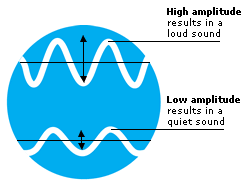DK Science: Loudness
Some sounds are so loud they are painful to our ears; others are so quiet they may be hard to hear at all. Things that vibrate a lot, such as car engines, can make a tremendous noise; they sound louder because the sound waves they generate carry more energy. The amount of energy carried by a sound wave is called its intensity. Sound waves of higher intensity are louder to our ears. The loudness of a sound is measured in decibels (dB).
Loudness is measured on the decibel scale. The quietest sound our ears can detect measures 0 dB, but even gently falling leaves make a sound that is 10 times more intense than that. Traffic on a busy road produces sounds of around 70–90 dB, around a million times more intense than the measurement for falling leaves. At up to 190 dB, the blast of a launching rocket is loud enough to damage people’s hearing permanently.
Very loud, amplified rock music can sometimes make your ears hurt. It can reach an intensity of 120–140 decibels, which is loud enough to cause temporary or permanent damage to your hearing. A sound of 140 dB is 100,000 billion times louder than the sound of falling leaves. Sounds begin to cause pain in the ears at around 120-140 dB.
Pilots wear special headphones that reduce the roar of an aeroplane engine to a quiet hum. Each earpiece has a built-in microphone that samples the unwanted noise many times each second. Electronics inside the earpiece produce sound waves exactly opposite in shape. When these sound waves are added to the noise, they cancel it out, protecting the pilot’s hearing.

